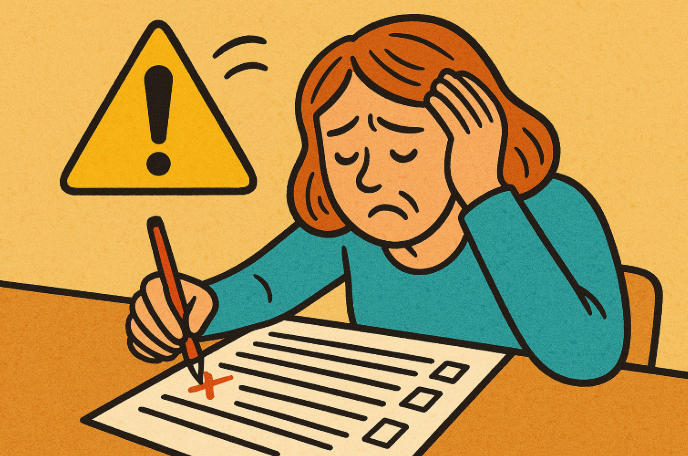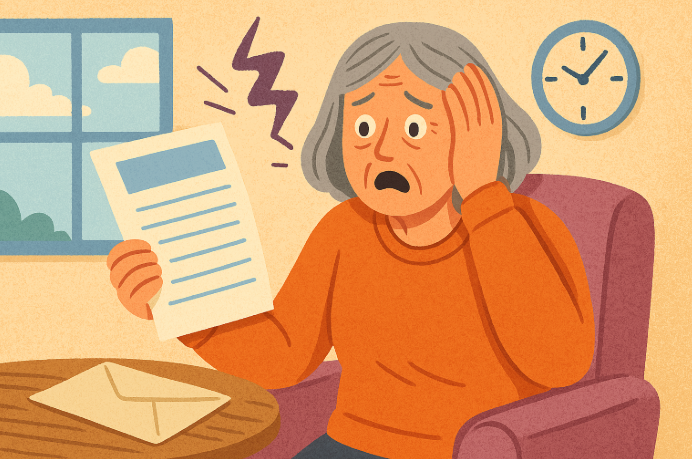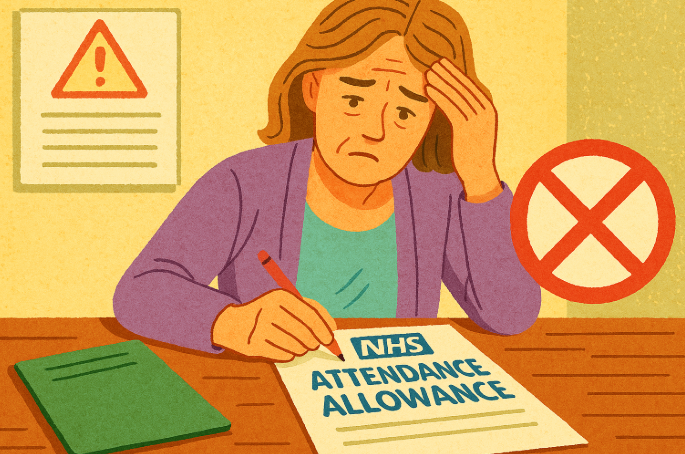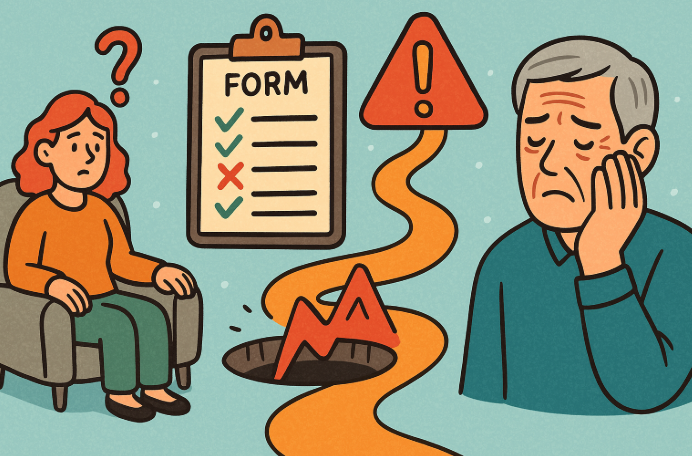What is Attendance Allowance and Why Pitfalls Matter in 2025?
Attendance Allowance Pitfalls to Avoid? Avoid Attendance Allowance is a tax-free benefit in the UK for individuals over State Pension age who need help with personal care due to illness or disability. In 2025, stricter guidelines and enhanced scrutiny of applications mean that understanding common pitfalls is more crucial than ever. Mistakes in applying can lead to delays, underpayments, or outright denials.
What Are the Most Common Attendance Allowance Pitfalls in 2025?
Applying for Attendance Allowance can be complex, and many older adults miss out on vital financial support due to avoidable errors. Here’s a breakdown of the most frequent pitfalls claimants face in 2025—and how to avoid them.
Are You Applying for the Wrong Benefit Instead of Attendance Allowance?
Many individuals mistakenly apply for the wrong benefit due to confusion around the differences between Attendance Allowance (AA), Personal Independence Payment (PIP), and Disability Living Allowance (DLA).
-
Attendance Allowance is only for individuals who have reached State Pension age and have care needs.
-
PIP is for working-age adults, and DLA is being phased out for adults.
-
Applying for the wrong benefit wastes time and may delay receiving the right support.
Tip: Always check age and care-related eligibility rules before starting an application.
Are You Underestimating the Impact of ‘Daily Living Needs’?
Many claimants fail to recognise how much help they truly require day-to-day.
-
-
Applicants often downplay struggles with dressing, washing, using the toilet, preparing meals, or taking medication.
-
Decision-makers rely on how much supervision or help is needed—not just a diagnosis.
-
Saying “I cope fine most days” without context may lead assessors to assume you don’t need help.
-
Are You Missing Out by Not Reporting Night-Time Care Needs?
Night-time difficulties can boost your claim significantly—but only if clearly reported.
-
You can be eligible for the higher fee if you require assistance at least twice throughout the night or once for 20 minutes or more.
-
Common examples include needing help to use the toilet, manage incontinence, or deal with pain or confusion.
Tip: Keep a night-time diary for a few weeks before applying to show patterns of night-time assistance.
Why Is Incomplete or Incorrect Medical Evidence a Major Pitfall?

Medical conditions documentation strengthens your case—but many claimants don’t include any.
-
Simply stating a diagnosis without backing it up with professional input may not be enough.
-
GPs, specialists, district nurses, and occupational therapists can all supply supporting letters.
-
Some claims are delayed or rejected due to vague or missing health evidence.
Do You Have Weak or Missing Medical Evidence to Support Your Claim?
Medical evidence is key to a successful Attendance Allowance claim. Without it, your application may appear unconvincing.
Common Mistakes:
-
Not including any medical documents
-
Relying only on a list of medications
-
Using outdated or irrelevant records
-
Expecting the DWP to contact your GP (they rarely do)
What Helps:
-
-
A recent letter from your doctor or consultant outlining how your illness impacts day-to-day living.
-
Care plans, support worker notes, or physiotherapy reports.
-
A short statement from someone who helps you at home.
-
Are You Failing to Explain the Frequency of Help Required?
It’s not enough to say you need help—you must explain how often and why.
-
-
Assessors cannot use phrases like “I need help sometimes” because they are too ambiguous.
-
Instead, give concrete examples: “My daughter helps me every morning with showering because I am at risk of falling.”
-
How Do Form-Filling Errors Affect Attendance Allowance Decisions?

Are You Making Mistakes on the Attendance Allowance Form (AA1)?
The AA1 form is long and detailed, and errors are surprisingly common.
-
Skipping questions or failing to provide enough detail weakens your application.
-
Many claimants understate their needs due to embarrassment or lack of awareness.
-
Some fail to use the continuation sheets provided—even when more explanation would help.
Tip: Don’t be afraid to overwrite the form using extra sheets. Fully describe each area of need.
Have You Misunderstood the ‘6-Month Rule’ Eligibility Criteria?
You must have needed care for at least six months before qualifying—unless you’re terminally ill.
-
Many applicants apply too soon, especially after a hospital discharge or new diagnosis.
-
This can result in automatic rejection, even if your condition clearly needs support.
Tip: If your needs started recently, mark your calendar and apply once the six-month threshold is met. If terminal, ensure your application goes through the Special Rules fast-track process.
Is Someone Else Claiming Other Benefits That Clash with Attendance Allowance?
-
If you currently receive Disability Living Allowance (DLA) or Personal Independence Payment (PIP), you are not eligible to receive Attendance Allowance.
-
If someone claims Carer’s Allowance for looking after you, you can still get Attendance Allowance—but inform the DWP.
-
Always check with DWP or a welfare adviser before applying if you’re already receiving disability-related support.
-
Using a benefit checker tool (like on GOV.UK or Turn2us) can help you avoid overlap.
Are You Already Receiving Disability-Related Benefits?
-
If you’re on PIP or DLA, you’re not eligible for Attendance Allowance.
-
Claimants often apply without realising these benefits serve similar purposes.
-
If you’re transitioning from PIP to Attendance Allowance (e.g., due to age), wait until PIP officially ends before applying.
-
Applying while still receiving an overlapping benefit may lead to rejection and confusion.
Are You Claiming Pension Credit or Housing Benefit Alongside Attendance Allowance?
-
Attendance Allowance is non-means-tested, but it can increase your entitlement to means-tested benefits.
-
You may receive extra premiums in Pension Credit, Housing Benefit, or Council Tax Support.
-
Notify both the DWP and your local council as soon as your award is confirmed.
-
This can lead to an increase in weekly income or reductions in rent and council tax.
Why Ignoring the Review or Reassessment Letters Could Be a Costly Mistake?

-
The DWP may send a review form to reassess your condition—especially if your claim was awarded on a temporary basis.
-
Failure to return the form may result in payments being suspended or stopped.
-
Even if your condition is unchanged, you must confirm this in writing.
-
Keep copies of all correspondence, and use recorded delivery for important documents.
Do You Know When and How to Respond to Attendance Allowance Reviews?
-
Reviews typically happen every 1–3 years, or sooner if your condition was expected to improve.
-
You should respond by the deadline given in the review letter.
-
Get in touch with the DWP and ask for an extension if you require further time.
-
If your condition has worsened, this could lead to a higher rate award.
How Can You Ensure a Successful Attendance Allowance Application in 2025?
-
Always read the form carefully before starting—it contains guidance notes.
-
Plan time to complete it thoroughly, ideally in stages, and ask someone to review it.
-
Use real-life examples: “I fall frequently due to dizziness; I need help using the toilet.”
-
Avoid phrases like “I manage” unless followed by an explanation of how support is still required.
Have You Collected All Necessary Supporting Documents?
-
Include letters from your GP, consultants, carers, or family members involved in your care.
-
Attach any care plans, hospital discharge summaries, or occupational therapy reports.
-
Ensure documents are dated and relevant—avoid submitting outdated or unclear paperwork.
- The effect of your illness, not only the diagnosis, should be the main topic of your supporting letters.
Are You Using Detailed, Clear Language in Your Application?
-
Use language that highlights your functional limitations—not medical terms alone.
-
Say “I can only walk five meters before needing support” rather than “I have trouble walking.”
-
Explain how often each difficulty occurs: daily, every morning, or multiple times per night.
-
Avoid downplaying your needs, even if you feel uncomfortable discussing them.
Should You Get Help from a Benefits Adviser or Organisation?
-
Organisations like Age UK, Citizens Advice, and local welfare teams offer free assistance.
-
Advisers can help complete forms, gather documents, and check eligibility.
-
Getting support often leads to stronger applications and fewer rejections.
-
They can also help if your claim is refused and you need to request a mandatory reconsideration.
What Happens if You Don’t Report Changes to Attendance Allowance Promptly in 2025?
-
Not reporting changes (e.g., a hospital stay, moving to a care home, or reduced care needs) can lead to overpayments.
-
If caught, the DWP may request repayments or even issue a civil penalty or fine.
-
Changes must be reported even if temporary, such as a hospital admission longer than 28 days.
-
Call 0800 731 0122 or write to DWP as soon as possible to update your information.
How Often Must You Need Night-Time Help to Qualify for the Higher Rate?
You must have the following in order to be eligible for the higher Attendance Allowance rate:
-
-
Help at least three times a night, or
-
One long period of care lasting 20 minutes or more
-
-
This includes tasks like toileting, managing medication, turning in bed, or calming confusion.
-
Keep a night-time diary for a week or more to track the help you receive.
- This journal is one piece of evidence you might use to support your allegation.
How Do I Use a Diary to Strengthen My Attendance Allowance Claim?
-
Keeping a care diary is one of the most effective ways to provide real-life evidence of your care needs.
-
Record at least 7 consecutive days, ideally including weekends, to reflect typical routines.
-
Be honest and specific. Include details like times, tasks, duration, and who provided the help.
-
Use clear language that describes why the help was needed (e.g., pain, confusion, falls).
-
Highlight both day-time and night-time care to support a claim for the higher rate.
Sample entry: “03:00 – Wife assisted with toileting and bed change (30 minutes).”
| Date | Time | Task | Frequency | Duration | Who Assisted |
|---|---|---|---|---|---|
| 1 Jun | 22:30 | Toileting | 3x/night | 15 min | Wife |
What Do Scottish Residents Need to Know About PADP Replacing Attendance Allowance?
In Scotland, Attendance Allowance will be replaced by the Pension Age Disability Payment (PADP) on April 22, 2025.
-
-
New applicants aged over State Pension age in Scotland must apply for PADP through Social Security Scotland.
-
You do not need to reapply if you are already receiving Attendance Allowance. Your reward will be sent to PADP automatically.
-
Your entitlement is impacted when you move between Scotland and the rest of the UK:
-
-
-
If you move out of Scotland, you’ll need to apply for Attendance Allowance in your new location within 13 weeks.
- You will be evaluated in accordance with PADP regulations if you relocate to Scotland.
-
-
Why doesn’t Attendance Allowance cover mobility?
Attendance Allowance is strictly for personal care and supervision—not mobility or travel needs.
-
There is no mobility component to AA, in contrast to Personal Independence Payment (PIP) or Disability Living Allowance (DLA).
This means:
-
-
You cannot access a Motability vehicle through Attendance Allowance.
-
Mobility aids, transport costs, or vehicle adaptations are not covered.
-
This separation exists because Attendance Allowance targets elderly individuals who often have static or home-based care needs, rather than needing support for independence in the community.
How Does Attendance Allowance Affect Your Other Benefits in 2025?
It is non-means-tested. Can increase other benefits like:
- Pension Credit
- Housing Benefit
- Council Tax Reduction
Notify the appropriate authorities to prevent underclaims or overpayments.
How to Claim Attendance Allowance Through the NHS: Pitfalls to Avoid

While the NHS does not directly handle Attendance Allowance applications, many people mistakenly assume their GP or hospital will manage the claim for them. In truth, the Department for Work and Pensions (DWP) processes these claims, but your NHS medical history plays a key role in supporting your case.
Here are some typical problems to avoid and ways to appropriately incorporate the NHS:
Do You Know How to Use NHS Medical Records for Your Attendance Allowance Claim?
-
Request a letter from your GP or consultant that outlines your condition, how long it has lasted, and the help you need.
-
Make sure the letter explains how your illness or disability affects daily living—not just the diagnosis.
- Use care plans or hospital discharge letters as supporting documentation.
Are You Dependent on Your Doctor to Fill Out the Form?
-
Pitfalls: Assuming that reports will be sent to DWP automatically by the NHS.
-
Reality: The DWP will only contact your GP if you leave questions blank or your case needs clarification.
-
Best practice: Attach any supporting NHS letters yourself with the AA1 claim form.
Are You Missing Out by Not Discussing Your Needs with Your GP?
Before applying, ask your GP to note the specific help you need in your records.
This includes:
-
-
Help with bathing, dressing, eating
-
Supervision for falls, medication, confusion
-
These notes can support your application if DWP requests them.
Should You Include NHS Carer Assessments or OT Reports?
Yes—if you’ve had a carer’s assessment or been reviewed by an occupational therapist (OT) through the NHS or local council, include those reports. They are strong evidence of your day-to-day support needs.
Quick Tips to Avoid NHS-Related Attendance Allowance Pitfalls
-
Don’t assume the NHS automatically shares your records with DWP.
-
Don’t rely solely on diagnosis—explain care needs in detail.
-
Always attach NHS letters and documents yourself.
-
Ask your doctor to provide a support letter before applying.
- Save copies of your application and any accompanying documentation.
Table: Common Pitfalls vs. Correct Approaches
| Pitfall | Risk | Correct Approach |
| Incomplete form | Rejection | Answer all questions fully |
| No medical proof | Denial | Include GP/hospital letters |
| No night-time details | Lower rate | Mention all night support |
| Overlapping benefits | Disqualification | Seek benefits advice |
| Ignoring reassessments | Payments stopped | Respond on time |
Bullet Points: Key Attendance Allowance Pitfalls to Avoid
- Don’t confuse Attendance Allowance with PIP or DLA
- Always include detailed day and night care needs
- Use a care diary to support your claim
- Keep copies of your form and supporting evidence
- Update the DWP on any changes immediately
Conclusion: How to Avoid Attendance Allowance Pitfalls in 2025
Applying for Attendance Allowance in 2025 requires detailed, honest, and well-documented information. Avoiding the common pitfalls—from weak evidence to benefit overlap—ensures a higher chance of success. Keep up with changing regulations and ask for help as necessary.
FAQs: Attendance Allowance Pitfalls to Avoid in 2025
What is the biggest mistake people make with Attendance Allowance?
Not explaining how the condition affects daily life clearly and in detail.
Can you claim Attendance Allowance and PIP together?
No. PIP is for those under State Pension age; Attendance Allowance is for those over.
Do savings affect Attendance Allowance?
No. Because it isn’t means-tested, income and savings have no bearing on it.
Is it worth appealing a rejected claim?
Yes. Many successful appeals include better medical evidence and clearer examples.
Who can help fill out an Attendance Allowance form?
Age UK, Citizens Advice, social workers, and local authority benefit teams.
I’m Laura Wilson, a passionate blogger and content creator with a deep interest in business, finance, and entrepreneurship. I’ve had the opportunity to write for several premium blogs, sharing insights & practical advice for individuals & small businesses. I’m the founder and publisher of ukbusinessmag.co.uk, where I focus on creating valuable, easy-to-understand content to help UK startups & SMEs grow.



